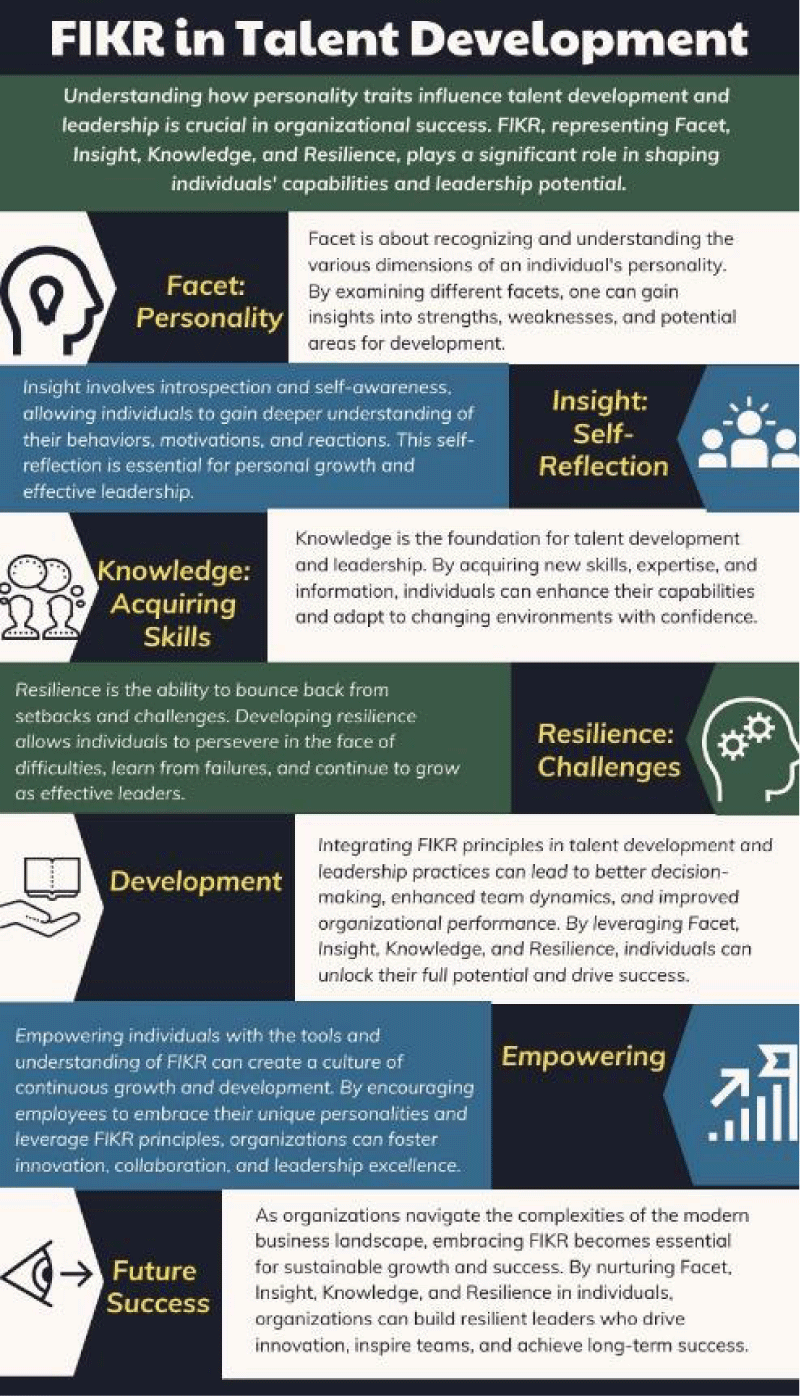Abstract
This study presents a new assessment tool, FIKR (Facet, Insight, Knowledge, and Resilience) Personality Traits (PTs) for organisational talent development and leadership. The FIKR assessment tool offers a thorough framework for developing talent and leadership, covering facets, insights, knowledge, and resilience. By using these elements, individuals can enhance their ability to successfully and strategically guide and influence others. Gaining self-awareness of one’s strengths and shortcomings, harmonising personal values with objectives for developing talents, obtaining the requisite information and abilities, and cultivating resilience not only promotes personal progress but also cultivates the potential of people within the organisation. By embracing the interaction of these FIKR characteristics, one may adopt a comprehensive and influential approach to talent development and leadership.








